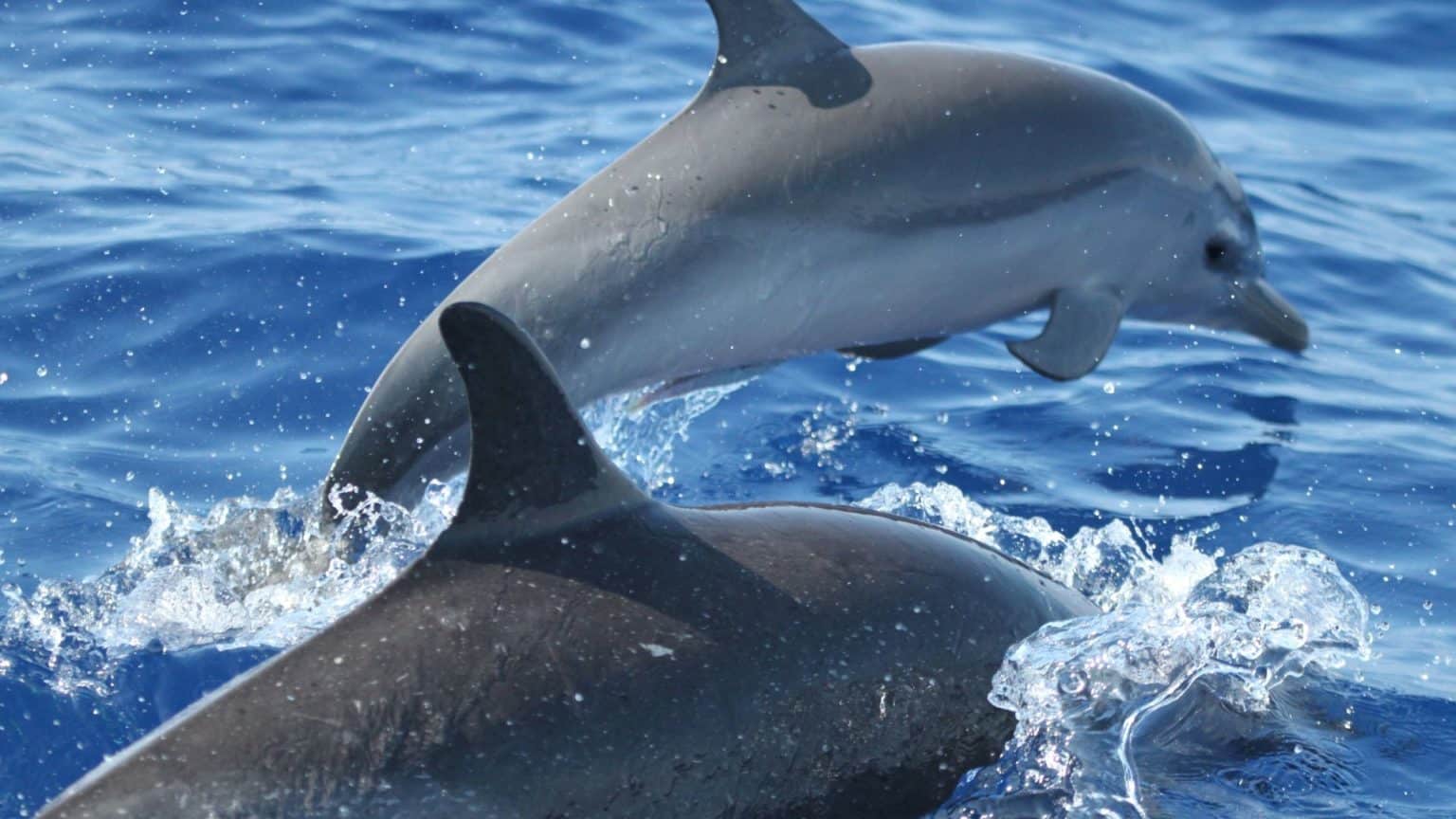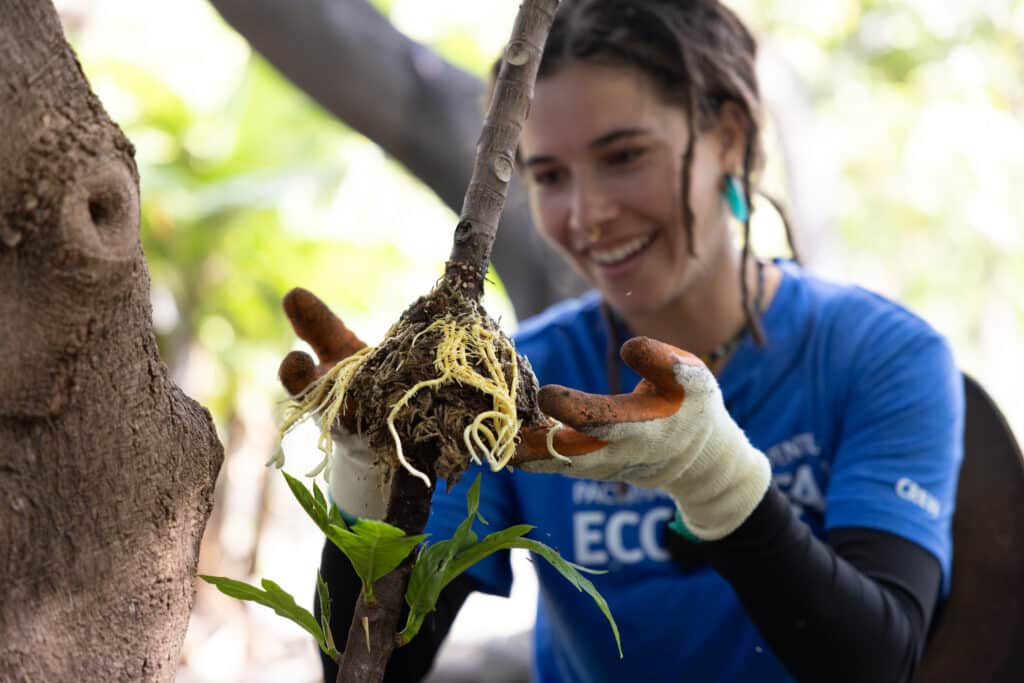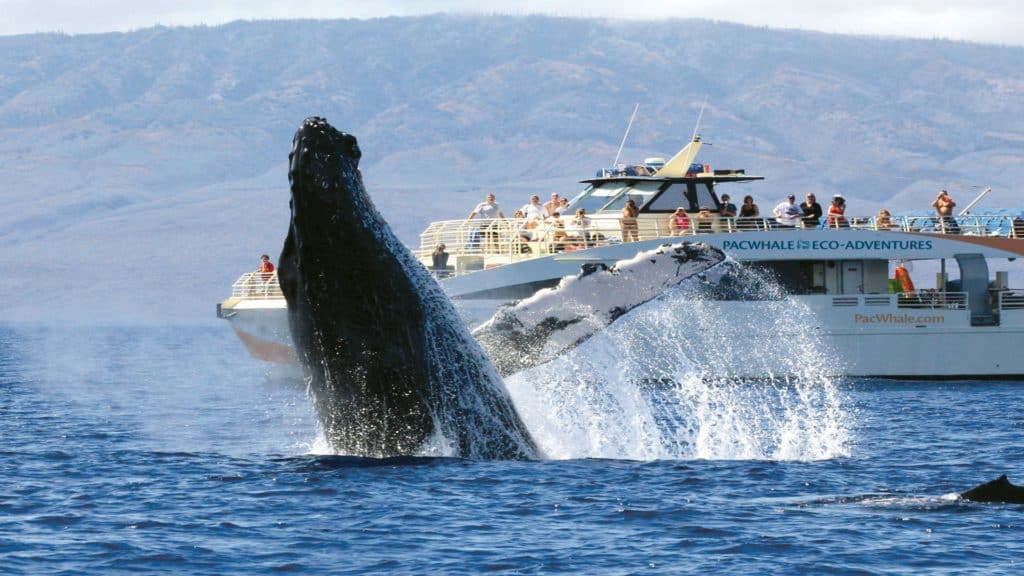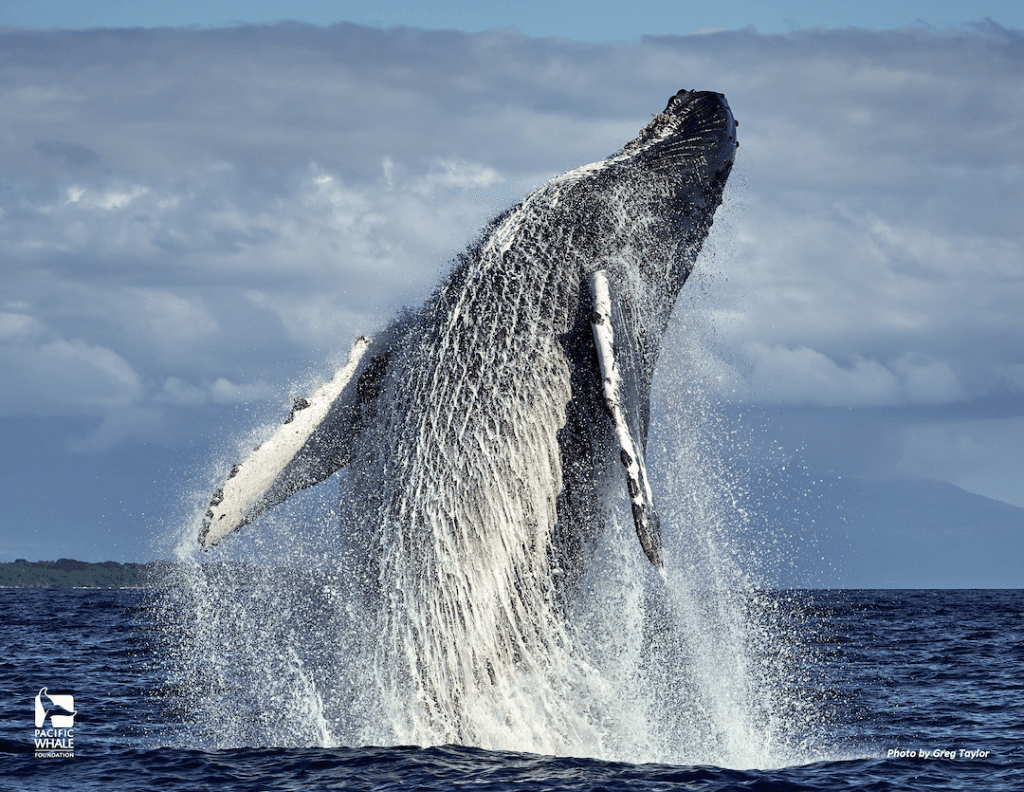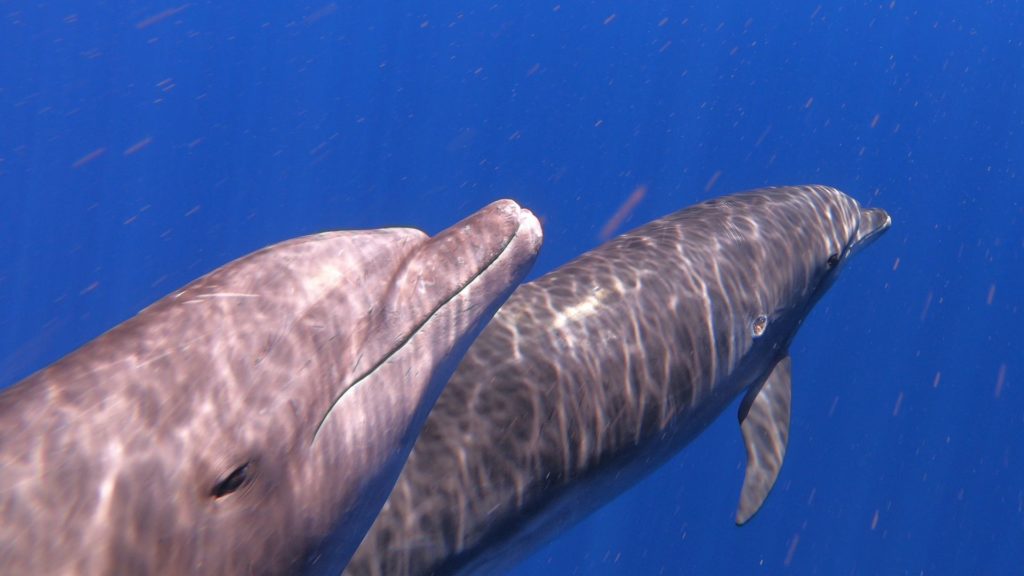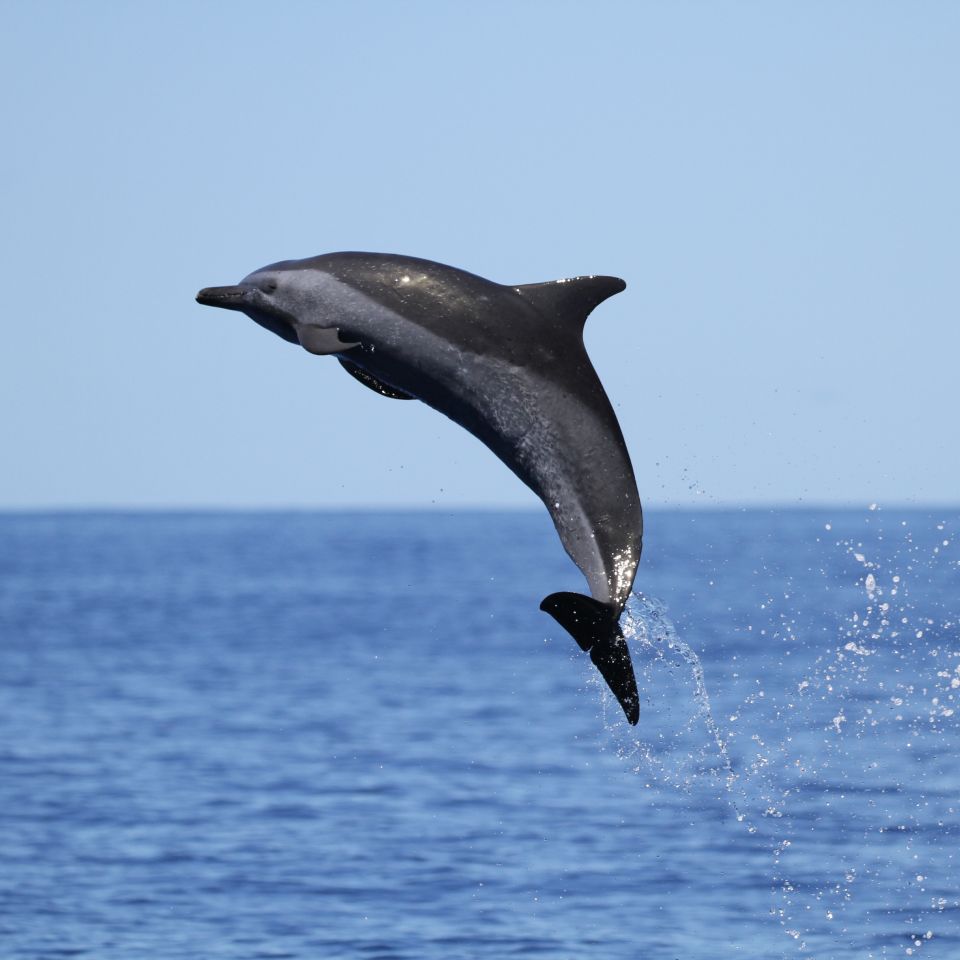
Small, slender pantropical spotted dolphins are found in warm waters around the world, particularly in the eastern Pacific Ocean
Pantropical spotted dolphins are highly social animals often found in groups of up to 100 individuals or associating with other dolphin species. They are known for their playful behavior and acrobatic displays, such as leaping 35 to 40 feet in the air.
Pantropical spotted dolphins have long white-tipped rostrums (beak/snout) and spots as their common name suggests, however, the spots develop with age. Protected under the Marine Mammal Protection Act (MMPA), the eastern tropical Pacific stock remains depleted due to tuna fisheries interactions.
The Hawaiian Islands are home to distinct populations of pantropical spotted dolphins found offshore and between Hawaiߵi Island, Maui Nui and Oߵahu.
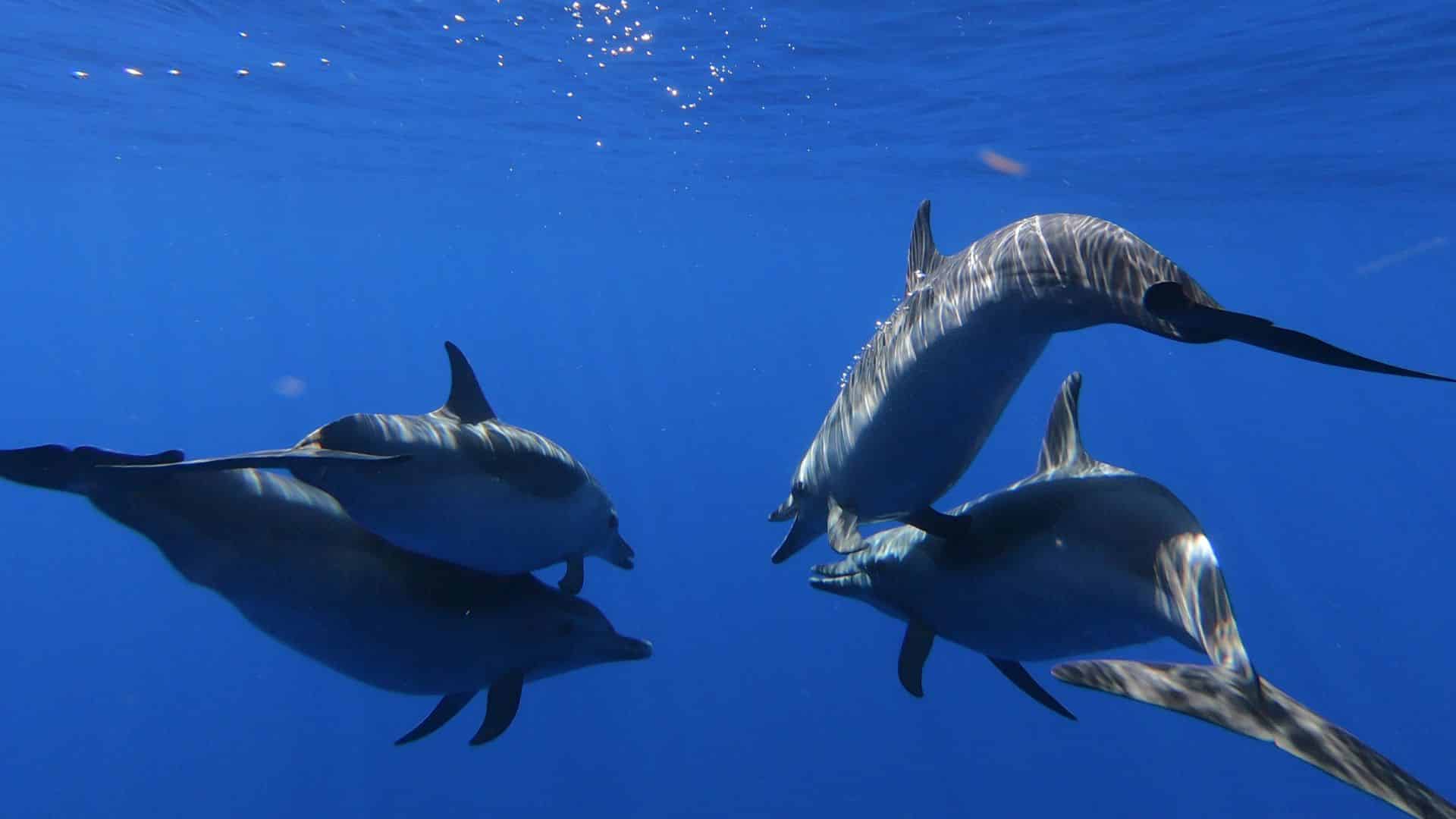
Key statistics
Interesting facts about spotted dolphins
Found in tropical and subtropical waters worldwide in groups up to 1,000 individuals
Average 6–7 feet in length and weigh around 250 pounds
They mate and calve year-round
Prey primarily consists of fish and mesopelagic cephalopods
Approximate life span is 46 years
Main threats include entanglement and bycatch (fisheries interactions)
How We’re Helping
We research and collect data to mitigate ongoing threats
- Employ photo identification, behavioral observations and UAS (unoccupied aerial system or drone) morphometric in data collection
- Identify cetaceans present in important marine ecoregions and assess population trends
- Identify and quantify the extent of major threats endangering these populations, such as underwater imagery used in scar detection to indicate fisheries interactions
- Guide science-based mitigation measures through enhanced management and/or policy
- Continue population monitoring and individual health assessments for impacted species
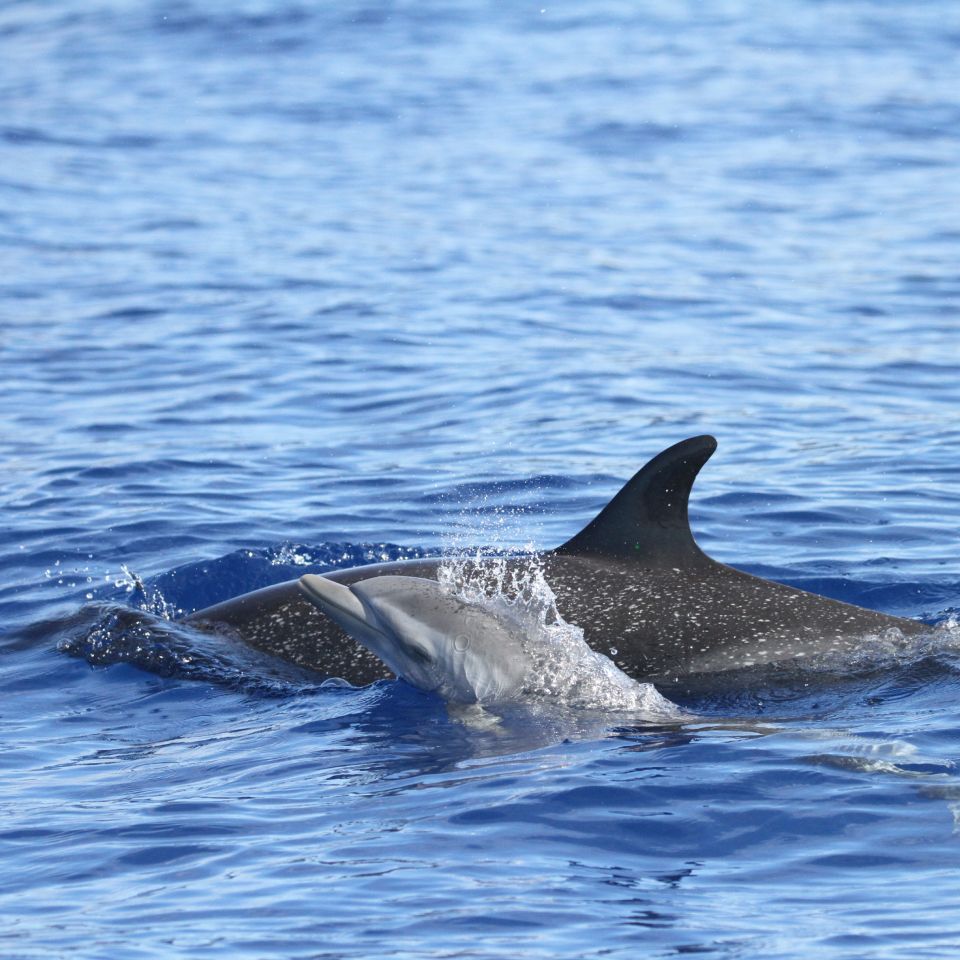
Project Partners
Publications
